Scientific name: Penstemon jamesii Benth.
Common names: James’ penstemon, James’ beardtongue
Plant Family: Plantaginaceae (Plantain)
A native evergreen perennial, Penstemon jamesii, will begin to bloom in May with medium to large, tube shaped, broad lavender or lavender-blue flowers with five lobes, or petals. Widespread across our state and easy to grow in your garden are some of the reasons you may become a “penstemaniac” this spring.
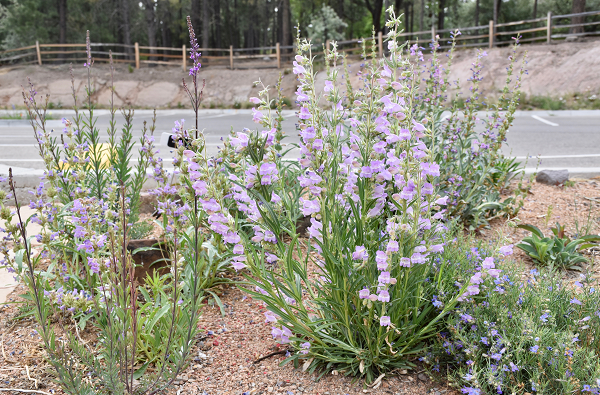
Photo credit: Larry Deaven
This penstemon grows up to 18 inches tall, with several upright, smooth or downy stems. The hairy, gray-green leaves are either linear or lance-shaped, with smooth edges or occasionally wavy teeth, and pointed tips. The leaves are up to 5 inches long and ¾ inch wide, are paired and without stalks. Numerous large lavender-blue or pink, bell-shaped flowers are produced in terminal racemes, with most of the flowers facing the same direction on one side of the stem (secund). The 2-lipped corolla has an upper lip with 2 lobes and a lower lip with 3 lobes, and a downy throat. The staminode (sterile stamen) extends beyond the corolla and is yellow-bearded along its entire length. The anthers are fully opened like a saucer (explanate) and are covered with wooly hairs.
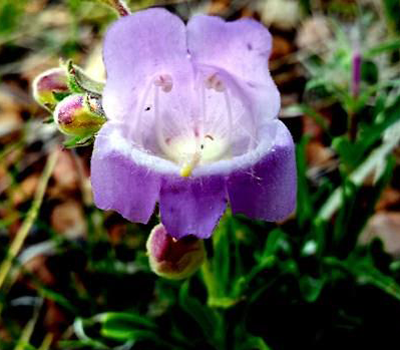
Photo credit: Meredith Yue
The genus, Penstemon, comes from the Latin paene, nearly or almost, and Greek stemon, thread, alluding to the single sterile stamen within each flower. The specific epithet jamesii honors American botanist, geologist, and surgeon Edwin P. James (1797-1861).
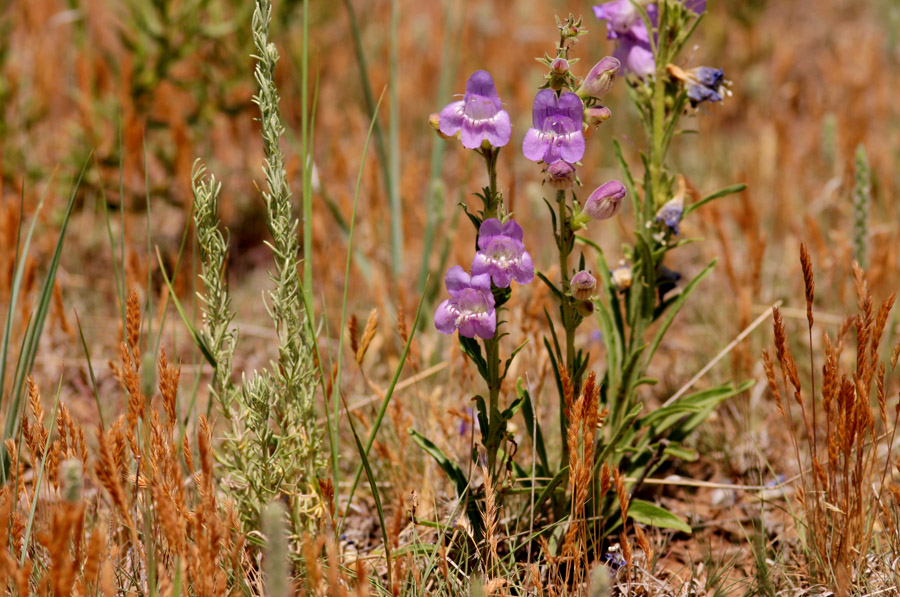
Penstemon jamesii, south side of the Gallinas Mountains along the road to Gallinas Peak, Lincoln County, New Mexico. Photo credit: Patrick Alexander.
The native range of P. jamesii is eastern New Mexico, extreme southwest Kansas, western Texas, southeastern Colorado, south to Mexico (Coahuila, Nuevo León).
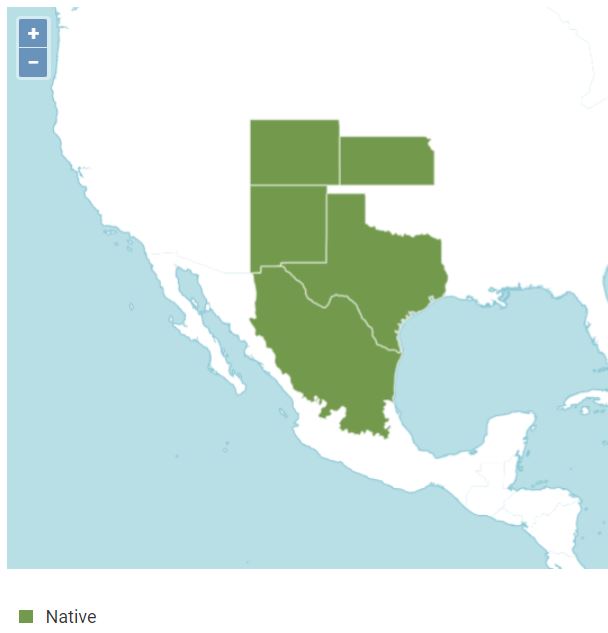
Map from Plants of the World Online. Facilitated by the Royal Botanic Gardens, Kew.
Penstemons need dry, gritty, gravelly or sandy well-drained soils. They are easy to grow in New Mexico and failure is almost always due to excessive moisture after flowering. They grow in soil of low organic content and are short-lived in soil that is too rich. Soil must drain quickly so that the plants’ crowns remain dry. Supplemental water in the first year helps them to become established. Although very drought tolerant, members of this penstemon section (Cristati) depend on ample spring water in order to bloom. They require minimal water after blooming, even during drought. In general, penstemons prefer dry soil in winter and some protection from intense winter sun. Like other xerophytic plants, they often die off after 1-3 years after blooming abundantly. Cutting back plants after flowering may increase longevity. A few stems can be left to promote self-seeding.
James’ penstemon grows at both of our sites: Botanical Garden at Museum Hill and at the Leonora Curtin Wetland Preserve.
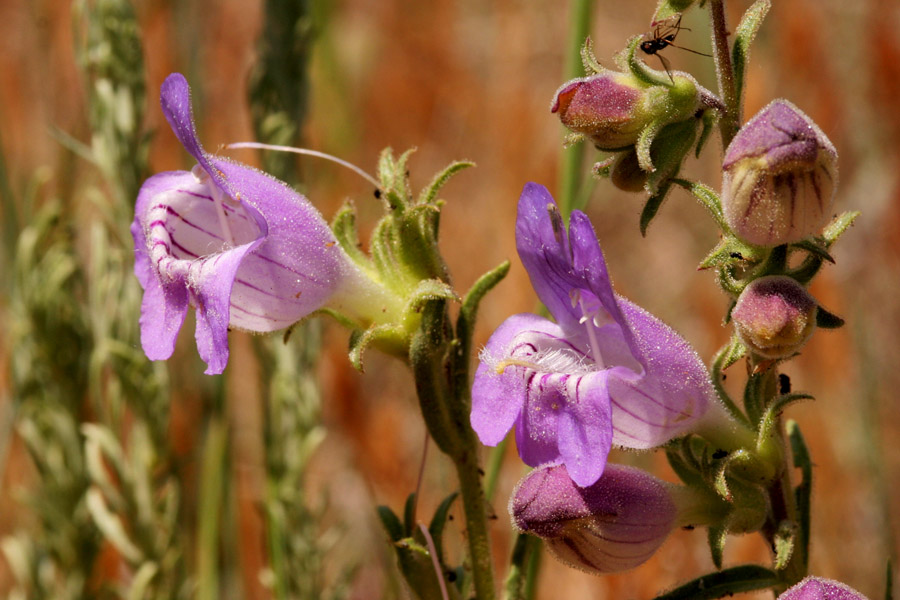
Penstemon jamesii, south side of the Gallinas Mountains along the road to Gallinas Peak, Lincoln County, New Mexico. Photo credit: Patrick Alexander.


